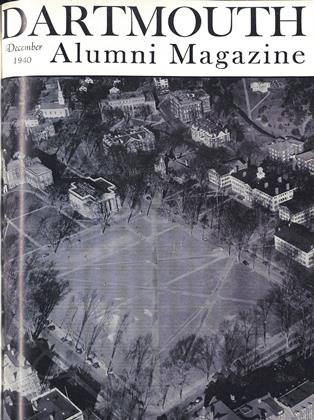As Sophomores, 355 in number, we participated in the one hundred forty-fifth opening of the College on September 18, 1913. The features of the Delta Alpha pantomime that autumn were personifications of Harry K. Thaw and Carrie Nation, both of whom, in the course of the performance, gave demonstrations of cheer-leading. Delta Alpha was administered, and well administered, by dormitory committee with the following representatives from 1916: College Hall, Flanders; South Mass., Engelhorn; North Mass., Rector; Hubbard, Riley; Hitchcock, DeVoe; Crosby, Brett; Wheeler, Joy; Richardson, Hearin; North Fayer., York; Middle Fayer., Homes in the north section, Goward in the middle, Hitchcock in the south section; South Fayer., Parkhurst; Reed, Harvey; Thornton, Burghardt. Naturally, during the summer the fame of our class had spread and in September there were twenty-two new members from eighteen other colleges in twelve other states: Butler, Carleton, Davis, Desmond, Devine, Gaylord, Hayward, Henderson, Herold, Karnan, Lawrence, Lord, McEndy, Morton, Murphy, Nickerson, Paul, Ruder, Skinner, Stackpole, Stone, W. L. Tapley.
The football season was one of the best ever; we took Mass. State, Colby, Vermont, Williams, Princeton, Amherst, and Penn., and each was about as easy going as the others. We. lost to the Carlisle Indians but not through the fault of McAuliffe, Colby, nor Pudrith. 1916 entered the Tennis Tournament with characteristic abandon and the following fared well—or pretty well: G. H. Smith, Larmon, Stowell, McClary, Osborn, Mack, Wass, Brush, Fenno, Barr, Doyle, Perkins, Steinert, Soule, McFalls, Dinsmore, Tuttle, Andrews. On the other hand, the Golf Tournament in 1913 called forth the positive participation of only four men from 1916: Bundy, G. H. Smith, Allison, McFalls. The Sophomore baseball team took the first of the interclass series with the class regulars and a few new stars: Murchie, Perkins, Mendall, Eskeline, DeVoe, Williams, McEndy, Rogers, Johnson. The Cross Country team assumed a sophomoric complexion: Durgin, Lewis, Corey, Granger; and in the annual fall Track Meet 1916 was well represented by Coakley, Durgin, and Rector as winners, while the Gym Team boasted of the services of Osborn, Garrison, and W. Sully, and Hockey went through a season which was merely average despite the services of Holmes, Gore, and Murchie.
In view of the above athletic data it may well startle the gentle reader to learn that when Professor Updyke interviewed over 300 members of 1916 in a puzzled effort to ascertain why we entered college, only five of us said that athletic prowess determined our decisions, whereas one hundred fortyone said that we came because we were influenced by Dartmouth connections. However, 1916 did more than its bit, as always, in other phases of college life. The Mandolin Club elected Mack, Hitchcock, Pease, Joy, H. Sully, Andrews, Steinert, Lewis, Hayden, and Wetherbee. The Band called on Joy, Kittridge, Olson, Clarke, and Ruder. The Glee Club bid Cole, Campbell, Mott, Dinsmore, O. R. Smith, Brown, and Cressy. The Choir selected Brown, Campbell, Cole, Cressy, Dinsmore, English, Linehan, Mott, Pfinstag, Phinney, Renfrew, and Riley. The Orchestra chose Bailey, Cheney, Hosmer, Joy, Macdonald, Pease, O'Hare, Wetherbee, and G. H. Smith. The histrionic art enlisted Cleaves, Payne, Little, Joy, J. W. Rogers, Greenwood, Cole, Costello, and Dean. The Christian Association had on its Cabinet Parkhurst, Telfer, and Marble and entrusted its deputations to Bates, Dinsmore, Little, and Fredrickson. For once the AEGIS was well heeled: Streeter, Sully, Stowell, Albrecht, Andrews, Chase, Fredrickson, Hitchcock, G. H. Smith, Steinert, Strong; and the JACK O' depended upon Stowell and Martin while the Press Club called upon Everett and Leland. Among our 1916 debaters should be named: Coffin, Merryman, Magill, Larimer, Phillips, Bernkopf, Bates, Butler, and Spelke. Even if we omit the numerous other organizations to which 1916 made active contributions in those distant days, the story is rather stirring, rather conducive to reflection, rather
Well, board at Commons cost $3.90 that fall and Homer Eaton Iveyes said in answer to a letter in the NEW YORK SUN that any man could easily have a year at Dartmouth for $700 and partake of the joys oflife as well. THE DARTMOUTH 'agitated (1913, mind you) for opening the Library on Sunday and a later hour for Chapel; Main Street merchants staged a demonstration (still 1913) because student salesmen in dormitories weren't licensed; the football team wore numbers for the first time (not much merriment over the crack that the Carlisle Indians "got their numbers"); John K. Bangs delighted us with his. Salubrities I Have Met and he could do it now, but I wonder what we should make of the show billed as a marvel ofphotography by Lyman Howe. And, as the poet Homer says, so it goes. Edward Tuck '62 gave us Tuck Drive that year and Johnny Johnson '66 gave us a string of D.O.C. cabins and C. D. Adams '77 said that year, No college of today in Americais so completely the product of the loveand sacrifice of its alumni as is DartmouthCollege.
 View Full Issue
View Full Issue
More From This Issue
-
 Article
ArticleLike Father, Like Son
December 1940 By PETER STIRLING CARDOZO '39 -
 Article
ArticleAmerican Student Morale
December 1940 -
 Article
ArticleThe Undergraduate Chair
December 1940 By Charles Bolte '41 -
 Class Notes
Class Notes1917*
December 1940 By EUGENE D. TOWLER, DONALD BROOKS -
 Article
ArticleGreen Eleven Makes Gridiron History
December 1940 -
 Class Notes
Class Notes1935*
December 1940 By JOHN D. GILCHRIST JR., BOBB CHANEY









